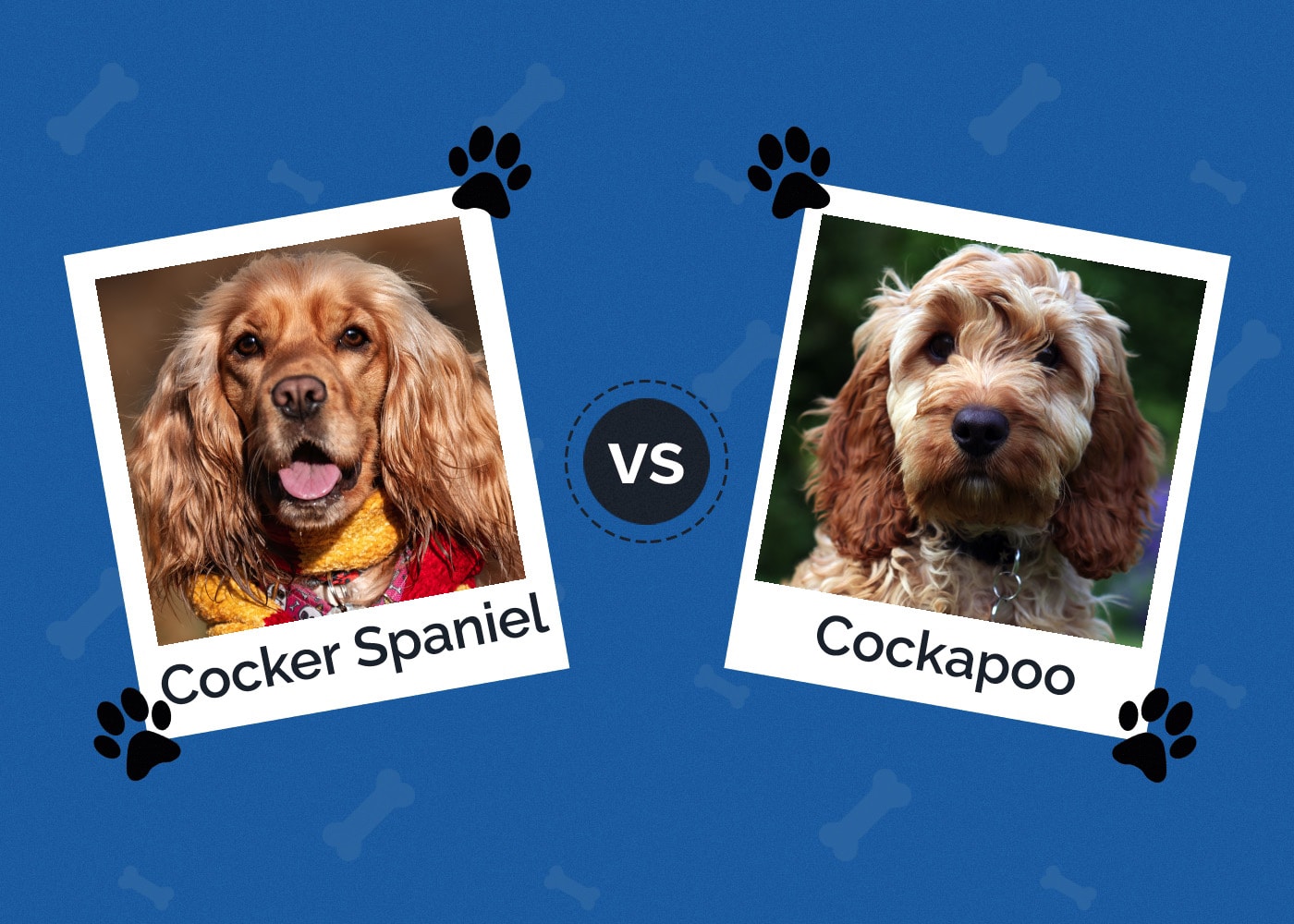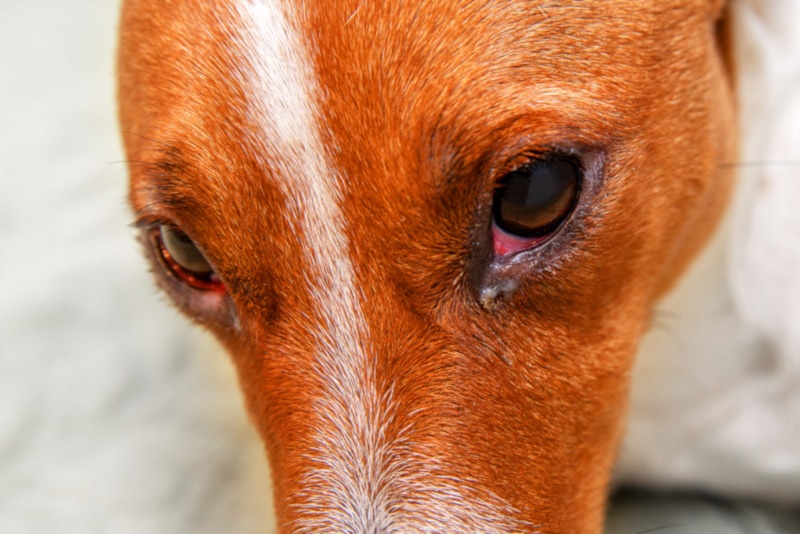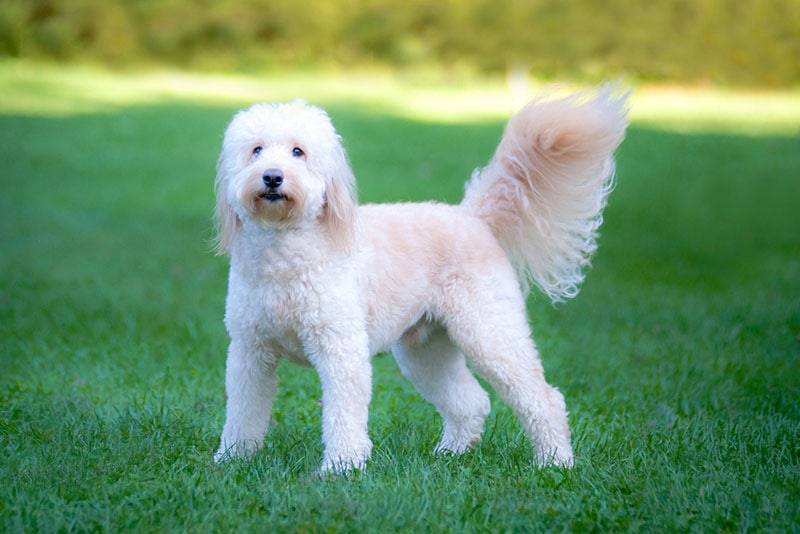How to Train Your Dog to Ignore Other Dogs: 4 Vet Approved Tips

Updated on
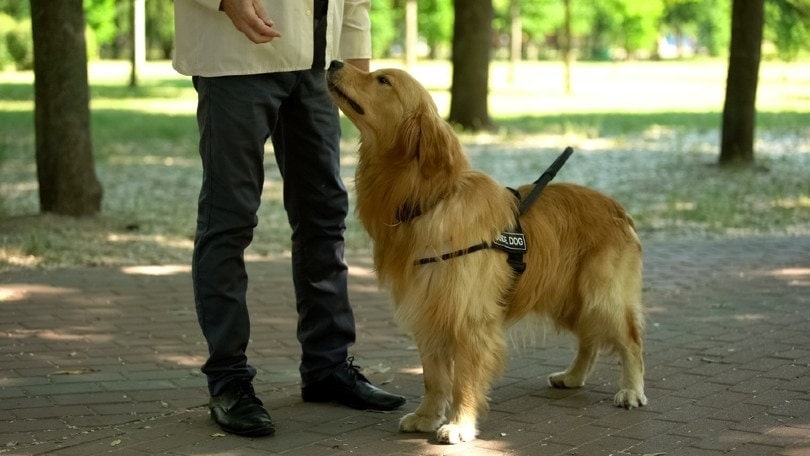
Walking on a leash doesn’t come naturally to dogs. Even after they’re trained, they may still have undesirable habits, such as lunging or barking at other dogs in the area. Aside from the fact that this can injure you, a dog that behaves this way could cause an escalation that leads to a fight and injuries.
Training your dog to ignore other dogs on your walks is not only possible, but the steps are similar to any other type of training. You can train your dog to stay focused on you and calm around other dogs in the vicinity using positive reinforcement. Here’s how to train your dog to ignore other dogs in four steps.
 Getting Started
Getting Started
Training your dog to walk calmly and ignore other dogs uses similar training methods, such as commands and rewards, but it’s a little different than teaching it a trick. Eventually, you want your dog to behave this way on its own, without a command, but you can start with your dog’s name or something simple like “quiet!”
This training is a little easier with puppies and can be combined with leash training, but it’s possible to train older dogs to walk calmly as well.
- Collar and leash
- Treats for rewards
Aside from those supplies—which you likely already have—you only need time and patience to train your dog properly. It’s best to use positive and negative reinforcement and not punishment.
Positive reinforcement is giving your dog praise or a treat for good behavior. Negative reinforcement is taking something away when your dog misbehaves. In this case, your dog will get treats, praise, and an opportunity to move closer to other dogs as the behavior improves, and your dog will get no treats and will have to move farther away if it misbehaves.
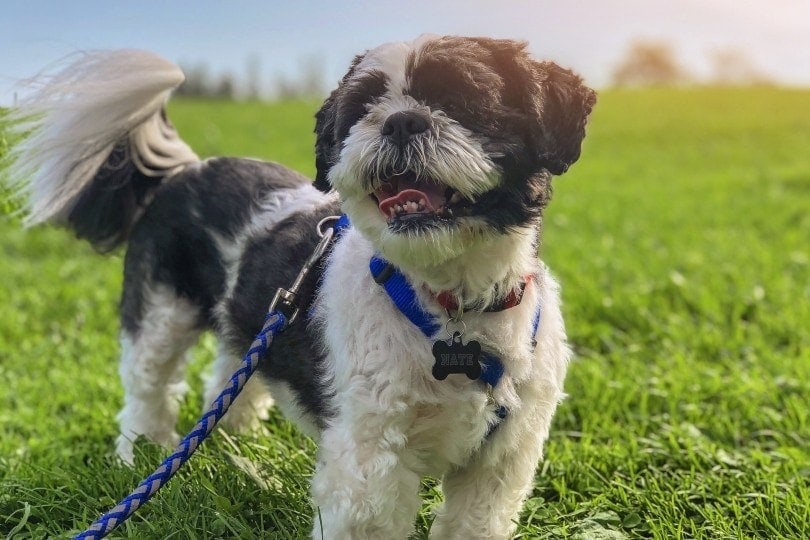
The 4 Steps to Training Your Dog to Ignore Other Dogs
1. Review Dog’s Recall Before the Walk
Before you go for your walk, work on your dog’s recall. Say its name, and if it looks to you, offer a treat as a reward. Repeat this process several times over days until your dog’s immediate response is to look at you when you say its name.
2. Start Slowly
When you take your dog out for a walk, try to keep your distance from other dogs. When your dog notices the other dogs, say its name. If your dog looks at you, give it a treat. Repeat this process over several days—or weeks—until this response is rapid and natural.
If your fellow walkers approach you to be friendly, politely tell them you’re working on leash training, and that you’d prefer not to interact with your dog at this point.

3. Move Closer
If your dog is responding well to the distance walking so far, start moving closer to other dogs in small increments. Reward your dog with treats if it responds to you or behaves and ignores the other dogs.
If your dog starts to bark or lunge at other dogs when you move closer, walk at a greater distance and repeat the previous step until this behavior stops. Then, you can try again.
4. Keep at It!
This is the whole process—move closer when your dog behaves, and retreat if your dog starts barking or lunging. It’s unlikely that the process will be completely smooth and without setbacks, but that’s okay! Just increase the distance until your dog behaves, and slowly move closer as your dog tolerates until you’re able to pass by other dogs closely without worrying about defensiveness or aggression.
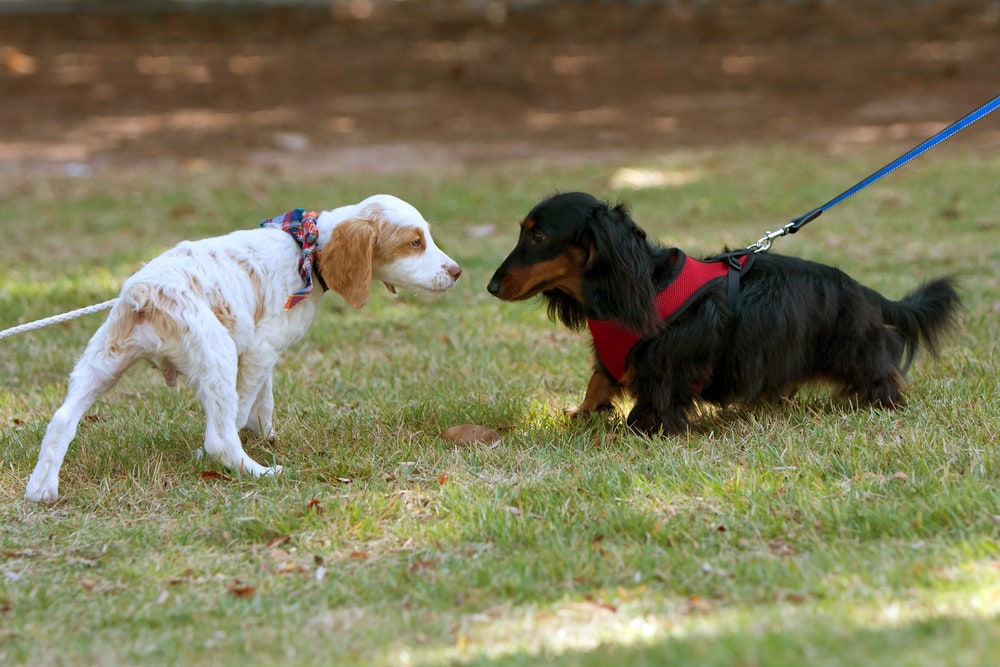
 Alternative Methods
Alternative Methods
There are other methods to train your dog to ignore other dogs, including nudging your dog to distract it when other dogs are close. Another method is to have friends walk their dogs in a line near yours, rewarding your dog for good behavior and moving them closer as the behavior improves.
Regardless of which method you use, however, the fundamentals are the same—you’re distracting your dog and rewarding it for paying attention to you instead of the other dogs.
Why Do Dogs Lunge or Bark at Other Dogs?
Many owners assume their dog is acting aggressively if they’re pulling on the leash or barking at other dogs. While aggression could be a cause, it’s not the only possibility.
Some dogs will bark or lunge as an act of aggression, certainly. Others may lunge or bark out of anxiety or defensiveness—basically, they’re concerned about the other dog and can’t get away, so they go on the offensive to avoid a fight.
Another possibility is being overly excited. Your dog wants to play with the other dog so badly that it can’t control itself. Though this may appear similar to aggression or fear, it’s about playing and being friendly.
Still, tugging hard on the leash and running excitedly to other dogs is dangerous and may make the other dog nervous, prompting aggression or defensiveness in return. No matter the cause, it’s important to teach your dog to walk calmly on a leash and be polite when getting close to or meeting other dogs.
 Conclusion
Conclusion
Whether it stems from aggression, fear, or an overwhelming urge to play, a dog that lunges at other dogs could injure itself, another dog, and the owner in the process. Teaching your dog manners on the leash is important for everyone’s safety and ensuring that your walks are pleasant and fun for both of you.
Featured Image Credit: Motortion Films, Shutterstock

 Getting Started
Getting Started
